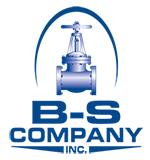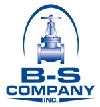BS Company is a leading supplier of new suplus pipe, valves, fittings, and flanges. As we are often asked by clients about the various operating pressure standards for forged flanges, we thought it would be best to address the topic in our latest blog. Here is everything you need to understand flange.
What is an ANSI flange pressure rating?
The American National Standards Institute (ANSI) defines pressure rating as the maximum allowed pressure that a flange can withstand at increasing temperatures. ANSI has standardised seven flange pressure ratings: 150, 300, 400, 600, 900, 1500 and 2500. If two flanges have the same bore size, are made of the same material, but have two different pressure ratings – say one is 150 and the other is 300 – the higher rated one will be heavier, larger and more durable than the lower-rated one, and therefore can withstand more pressure at various temperatures. The 150 flange withstands 140 psi at 600°F, while the 300 one withstands 570 psi at the same temperature.
How do you choose the right pressure rating for your job?
You can consult rating tables applying to your chosen bore and material. These tables have a range of working temperatures on one axis and a range of pressure ratings on the other. The first thing to do is to determine the maximum working temperature in your piping system. One the line of the table that corresponds to that temperature, we then look for the maximum pressure you expect, and this will give us the recommended pressure rating.
The pressure rating recommendations are based on the ANSI standards corresponding to particular flange sizes. Bores of up to 24 inches work according to the B16.34 standard. Sizes above 24 inches are read according to the B16.47 standard. It’s essential to ensure that you’re consulting tables corresponding to the correct standard.
If you’re still unsure which pressure rating or operating pressure is appropriate for your piping system, contact BS Company.


